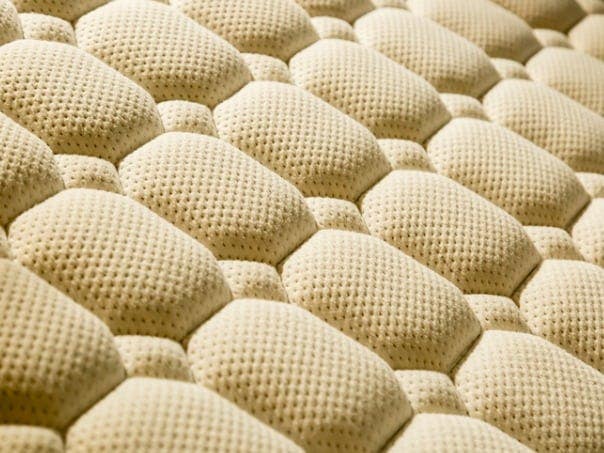Bedding
Published March 30, 2022
9 minMemory Foam vs Pillow Top: What Is the Difference?
Memory foam mattresses consist of polyurethane foam that conforms to your body, while Pillow top mattresses have an added layer of padding on top of the mattress. The difference between memory foam an

Table of contents
Difference Between Memory Foam and Pillow TopWhat Is Memory Foam?What Is Pillow Top? ConclusionFrequently Asked Questions
Memory foam mattresses consist of polyurethane foam that conforms to your body, while Pillow top mattresses have an added layer of padding on top of the mattress. The difference between memory foam and pillow top is that memory foam mattresses are designed to provide support and comfort, while pillow-top mattresses are designed for a softer feel.While memory foam and pillow top are exceptionally soft and conforming, they have entirely different structures and support capacities; so which is best for you?
Difference Between Memory Foam and Pillow Top
Finding it hard to keep track of all the differences between memory foam and pillow top? This table is all you need to go through:| Parameter | Pillow Top | Memory Foam |
|---|---|---|
| Durability | Not durable. Lasts for only 6 to 8 years. | Considerably durable and lasts for 10 to 15 years. |
| Motion Isolation | Innerspring coils do not help with motion isolation | Excellent motion isolation properties |
| Temperature Regulation | Breathable and cool | Tends to trap heat |
| Comfort | Decent comfort and body conforming | Superior comfort along with pressure relieving and back support |
| Off Gassing | No off-gassing if made without foam | Synthetic foam leads to considerable off-gassing |
| Affordability | Pretty cheap and available between $200 to $1000 | Expensive and can cost around $800 to $1500 |
What Is Memory Foam?
Memory foam is a material that is often used in mattresses and other types of bedding. It is known for its ability to conform to the body, provide support and comfort. In addition, memory foam mattresses and pillows help reduce pressure points and provide support for those with sleeping aches, injuries, or chronic pain. It is primarily made of polyurethane foam and is a common choice for plush comfort with medium firmness and soft bed levels. The foam responds to your body temperature and molds accordingly as it is susceptible to temperature and pressure changes. In addition, the highly pliant soft layers of memory foam allow it to contour your body and evenly distribute your weight.Types of Memory Foam
Before we dive deeper into the memory foam vs. pillow top debate, let's check out the different kinds of memory foam you can choose from.- Gel Memory Foam
- Plant-based Memory Foam
- Other Cooling Options
Pros of Memory Foam
There are countless benefits of sleeping on a memory foam mattress. So let's take a quick look at the same:- Soft and durable for superior comfort
- Excellent pain relief from joint and backaches
- Consistent pressure relief to enable better sleep
- Body contouring and malleable for extra support
- Helps with spine alignment and support
Cons of Memory Foam
Although memory foam mattresses are superior in a lot of aspects, there are still a few drawbacks:- Being made of multiple layers of high-quality foam, they are comparatively expensive.
- Some memory foam mattresses emit a strong chemical smell similar to those found in new bedding accessories; however, the smell subsides with time and isn’t lasting.
What Is Pillow Top?
Many people do not appreciate the structure of soft layers considering its lowering and permanent sinking effects on the mattress’ supporting capacity. If you are someone who needs more comfort without compromising on support, try a pillow-top mattress. These mattresses are just like any regular mattress with an additional comfort layer stitched right on top. This extra layer is usually made of down, memory foam, latex, or fiberfill.Pillow tops were initially made to be stitched on innerspring mattresses but new-age latex mattresses being exceptionally firm, often come with an optional add-on of pillow tops. After all, what good is a firm mattress without comfort?Types of Pillow Tops
Now that we know what a pillow top mattress is, let's check out the different options you have:1. Regular Pillow Top
Regular pillow-top mattresses have an additional layer of comfort stitched above the mattress. There is a clear distinction between the mattress’s original comfort layer and the pillow top. This makes the extra padding much more recognizable. Depending on the brand, it might also help you choose the ideal level of extra comfort you need.2. Euro Pillow Top
Euro pillow top mattresses have extra padding stitched under the mattress cover so that it looks plush and comfortable as a whole unit. Since there is no distinction between the pillow top and the mattress, your additional comfort layer will receive better edge support, making the whole setup more durable.Pros of Pillow Top
Memory foam and pillow-top mattresses are strong contenders, but there are still a few additional perks of pillow-top mattresses that give it a lead:- The structural uniqueness of pillow top mattresses prevents off-gassing
- These mattresses are affordable since the extra padding is limited to the top layer
- The coil layer enables adequate airflow, making the mattress cooler and breathable
Cons of Pillow Top
Pillow top mattresses are unique, yet they do have some drawbacks you might want to consider before making an informed decision.- The distinct separation of the two layers makes it less durable, affecting its overall life.
- These mattresses do not limit motion transfer and often cause disturbance to the partner every time the other moves.











